Free download: Top 10 Natural & Easy Remedies for Joint Pain from Home. Learn these helpful remedies.
Estimated Reading Time: 11 minutes read
Sometimes there is nothing better than sinking into your couch at the end of the day; however, if you have knee pain, sometimes there is also nothing worse than trying to stand up from that same couch.
Talk about ruining a relaxed mood when you have to try multiple times to stand up from a couch cushion that has suddenly become quick sand and increases your knee pain.
You may have also noticed knee pain when you climb stairs, walk, kneel, and try to get out of your car.
Knee pain can have a huge impact on our lives! Today we’ll cover knee pain 101 to help guide you to ways to identify what is happening with your knee as well as ways to treat your knee pain.
Let’s Start with Looking at Knee Anatomy
Sometimes our pain comes from our bones, sometimes our muscles, and unfortunately, sometimes our pain comes from a combination of both.
Understanding the structure of the knee can help you understand why you may have knee pain.
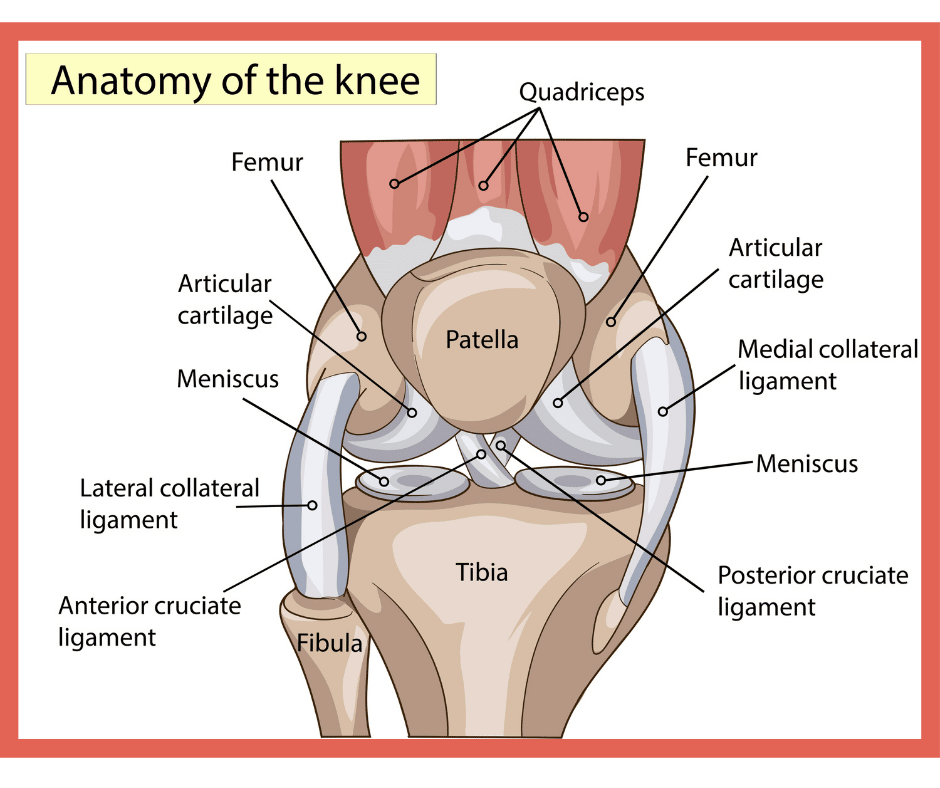
The Bones
Our knee is made up of the following bones:
- Femur: the large bone in your thigh
- Tibia: your shin bone
- Patella: your kneecap
The bones are covered in a layer of cartilage that helps them move over each other without friction. Think of cartilage as the layer of ice in an ice rink.
Without that layer your skates would get stuck on the floor, but with that layer you are able to glide smoothly across the surface.
The Ligaments
The bones are great, but we need something to hold them together. Ligaments structures in our knee that help stabilize our bones. They are made of strong fibrous tissues that connect one bone to another bone.
Our knee is made up of the following ligaments that all connect the femur (thigh bone) to your tibia (shin bone):
- Anterior Cruciate Ligament (ACL): helps prevent the shin bone from moving too far forward.
- Posterior Cruciate Ligament (PCL): helps prevent the shin bone from moving too far backward.
- Medial Collateral Ligament (MCL): This helps keep our knee from bending too far in and to the side.
- Lateral Collateral Ligament (LCL): This helps keep our knee from bending too far out and to the side.
The Muscles and Tendons
Like our ligaments, our muscles and tendons also support and hold our knee bones together. Our muscles are made of fibers that contract to allow for movement at our joints, while tendons are strong fibrous structures that connect our muscles to our bones.
The major muscles involved with our knees are:
- Quadriceps: located in the front of the knee, they help extend the knee.
- Hamstrings: located in the back of the knee, they help bend the knee.
The Menisci
While we have ligaments, tendons, and muscles there to support our knee we still need one more layer of stability: the menisci.
The menisci are essentially two cups on either side of our knee that help hold the bottom of the femur (thigh bone) in place.
The two menisci are:
- The medial meniscus: located on the inside of the knee.
- The lateral meniscus: located on the outside of the knee.
Common Symptoms You May Feel Besides Knee Pain
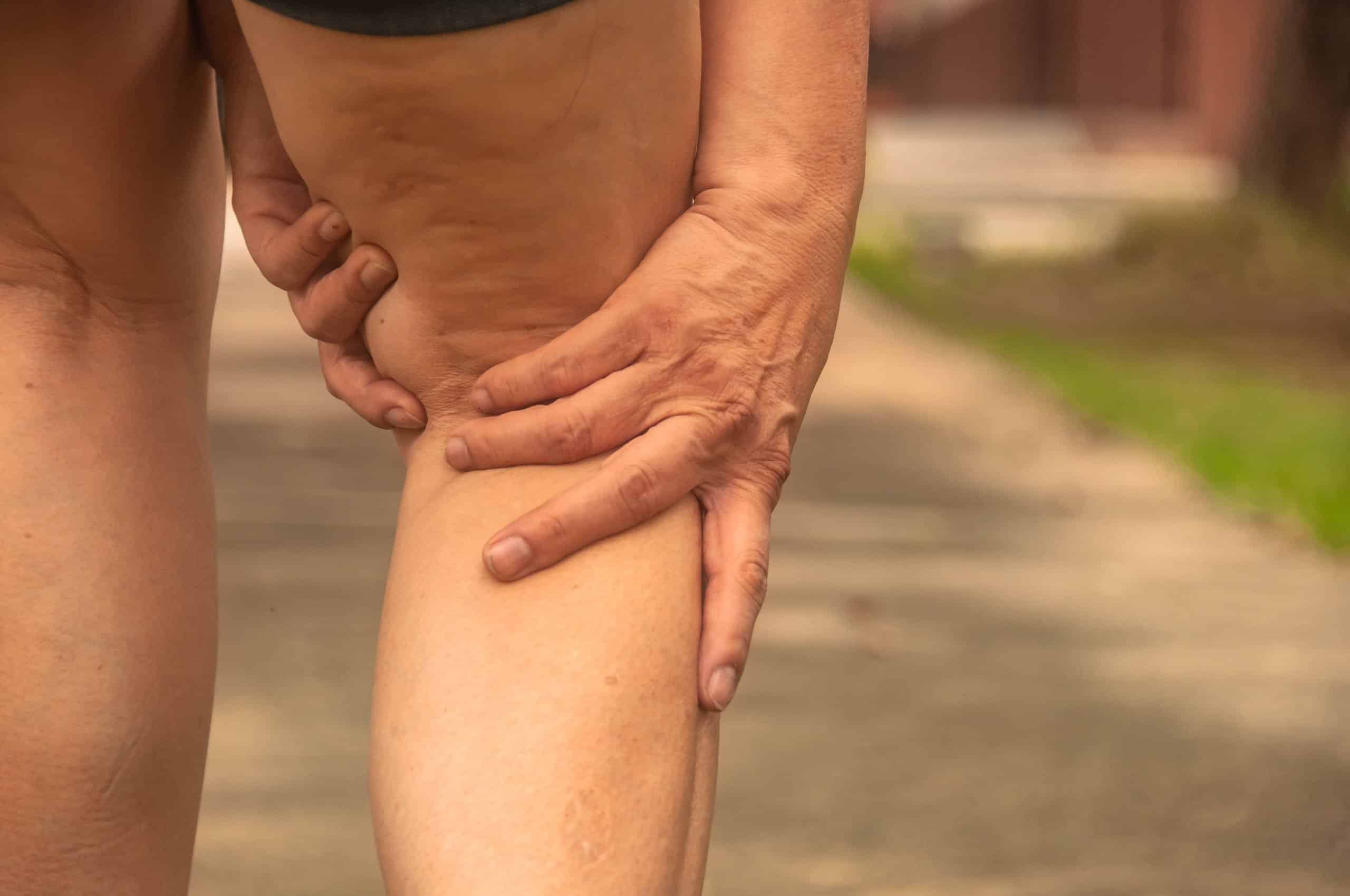
There can be many reasons for knee pain. Here are some of the most common symptoms you may experience if you have knee pain:
- Increased pain in the morning that improves with movement.
- The opposite: pain that increases with activity such as walking, stairs, or exercising.
- Warmth or swelling in your knee.
- Crunching, popping, or clicking in your knee.
- Weakness or instability in your knee.
- Stiffness in your knee that can also prevent you from bending or extending your knee all the way.
What are some Common Problems that Cause Knee Pain?

Sprained or Strained Knee Ligaments and/or Muscles
Having a sprain or strain is common and can often happen when we try a new workout routine – thank you New Years Resolution. A sprain or strain can also occur after a fall or sudden movement.
A strain occurs when there is a tear in our muscle fibers. The severity of the tear can vary from just a few muscle fibers to a full-thickness tear.
A sprain occurs when there is a tear in our tendon, the fibrous structure that connects the muscle to the bone.
With either a sprain or a strain you’ll feel pain in your knee that increases with activity. In both cases it’s important to rest and use ice first to let those tears heal.
Once the sprain or strain feels better you can eventually move on to strengthening and then finally to stretching.
Stretching is the last step of recovery because stretching puts tension on tendons and muscles, so be sure to rest and strengthen first!

Osteoarthritis
Remember how we discussed that between the bones we have a layer of cartilage and how it’s like a layer of ice on the ice rink? When that layer of cartilage is smooth it works great and everything slides without friction or pain.
However, arthritis occurs when potholes start to form in that smooth layer. Imagine trying to skate on ice full of potholes!
Those potholes cause grinding and friction in your knee which leads to a crunching feeling in your knee as well as pain.
This is also why you may have heard that your knee is “bone on bone.” While your bones are of course next to each other already they are supposed to have a layer of cartilage between them.
Then that cartilage is gone, now those bones are truly touching, causing friction and pain.
A common symptom of arthritis is knee pain that is worse in the morning. Pain typically improves with movement throughout the day.
In general, treating arthritis involves improving joint range of motion and improving muscle strength to better support your knee joint.

Meniscus Tear
A meniscus tear involves a tear to either the medial or lateral meniscus. This type of tear is often caused by forceful twisting of the knee.
A common symptom of a meniscus tear is feeling pain when you press on either the inside or outside of your knee, although it is possible to tear both.
You will also often feel painful clicking when standing up, squatting, or climbing stairs.
In general treatment for a meniscus tear depends on the severity of the tear, but there are cases where you can treat a meniscus tear without surgery.
Treatment often includes strengthening and functional task training.

ACL Tear
This is a common sports injury, although it can also happen off the sports field. This injury often occurs when stopping suddenly and changing direction.
If you experience an ACL tear you may hear a popping sound when it occurs. You will also notice swelling and a sense of instability in your knee following a ACL tear.
Treatment, like with a meniscus tear, often depends on the severity of the tear. You may have to have surgery for this type of injury.
Treatment after surgery involves a lot of structured strengthening and functional task training.

Previous Injury
Unfortunately once we’ve had a knee injury the tissue is weaker even after it has healed. Therefore, it’s important to keep up with your knee exercise routine to prevent retearing or new knee injuries.

Your Weight
This last year has maybe been one of the toughest years for staying active and eating right. Many of us have gained weight and that actually has a big impact on our knees! In fact, each additional pound we carry around is actually equal to four pounds of force through our knees.
This means that working on getting to a healthy weight can actually take a significant amount of pressure off your knees.

Muscle Imbalance/Weakness
When we are kids we move in all directions, to the side, diagonal, forward, and backwards. However, when we are adults we tend to get stuck moving in only one direction: forward. We may walk, jog, run, and bike to stay active, but those all use our muscles in similar ways.
This means that as adults many of us have muscle imbalance. This can cause knee pain because we may have one muscle pulling more on our knee than another.
Imbalance also means our posture and movement may be off, putting more strain on our knees.
If you do not think you have any of the common knee injuries listed above, but still have knee pain, muscle imbalance may be your culprit.
This means it’s time to stretch those tight muscles and strengthen the weakened ones. Muscles that typically need more strengthening are core muscles, glutes, and quadriceps (muscles in the front of your knee).
Meanwhile your hamstrings (muscles in the back of your knee) are often tight and would benefit from stretching.
How To Best Manage Knee Pain At Home
There are many ways to manage knee pain at home! It’s best to start by trying to figure out the type of injury or cause for your knee pain. Each type of injury uses a different treatment approach and you want to make sure you’re picking the right one!
In general, rest, stretching, and strengthening exercises can all be performed at home to help you stop knee pain and to keep it from coming back.
Our Feel Good Knees program is also a great way to help you manage knee pain once you are ready and cleared by your physician to perform exercises at home.
When to Seek Medical Care for your Knee Pain
It can be tricky to know when to seek out medical care for knee pain. Let’s break it down between an old injury and a new injury:

If Your Knee Pain is from a New Injury:
Some pain comes on gradually, some is sudden. In general, if you experience a sudden onset of knee pain (may be from a fall, sports injury, tripping, or just any sudden pain) then you may want to speak to your physician.
Even more reason to reach out is if that sudden knee pain is also accompanied by popping, clicking, swelling, instability, or redness.
These may be signs of tears in the muscles, ligaments, or menisci and may need surgery to repair.
A doctor will be able to tell you if surgery is recommended or if you can try conservative measures first, like exercise!
Another good rule of thumb is that if you can not put weight through your knee without significant pain, it’s time to seek medical help.

If Your Knee Pain is from an Old Injury:
The good and bad thing about an old injury is that you’ve had to deal with this before. In fact, you may have already seen a physician or physical therapist for the injury before.
If your knee pain seems to be occurring in a way you’ve experienced before it’s time to go back to the treatments and exercises that helped your pain in the past.
Try pulling out those old exercise sheets or check out our Feel Good Knees program to try to get your knees back on track.
However, if your knee pain feels different or is getting worse and worse it may be time to talk to your physician again.
How Can I Prevent Knee Pain?
Whether you’ve never had knee pain, had it in the past, or are just starting to experience knee pain there are many ways to help yourself and to work towards healthy knees!
Step one: don’t sit on the couch all day 🙂
But really, our joints are happiest when they move and it is important to keep moving those knees to help with pain and to help you keep an active lifestyle.
Remember, when in doubt, reach out to your physician to help understand which type of knee pain you have so you know more about the ways to treat your knee pain.
Also, don’t forget that you can always check out our complete 6-week follow-along Feel Good Knees program to learn ways to exercise at home to help out with knee pain!
Let’s get back to being able to sink into the couch at the end of the day without having to worry if knee pain will prevent us from being able to get back up!











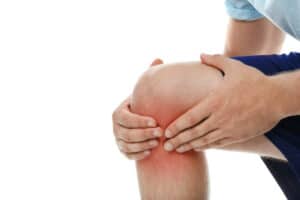
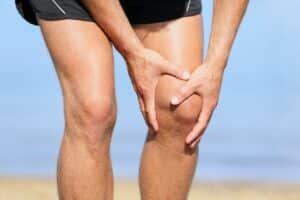
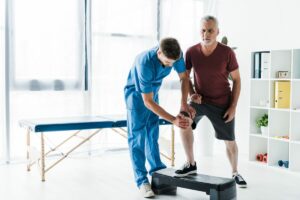

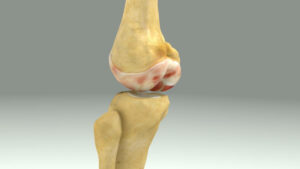

6 Responses
Good morning. I had double knee replacement 2 1/2 years ago. I have not had a good day since. I did rehab twice, acupuncture a couple of months, I had a bone scan, they pulled fluid off my knee to send it off for inflammation. Nothing. I went to a Reconstructive orthopedic doctor, there are a few things wrong with the surgery but not enough for him to go back in to fix it. Will all your exercises help my stiffness and the pain? The worse is when I get up from sitting or laying for several hours. Or stand in one place. This has been hard for me. After this length of time will my knees improve??
Margie, we have a Feel Good Knees program that would be very beneficial for you. Our program has helped quite a few people with a similar experience as you. The isometric "no-movement" exercises in Feel Good Knees are designed to help reduce inflammation within the knee which can decrease pain and promote healing.
I downloaded this month's ago and really didn't do It but my knees are worse now. I don't know how to find the download. Can you help me or send it again. Teddi Youtz. tedsq@aol.com
Hey Teddi! I will have Taryn from my team send you over the new link. Please let us know you got it 🙂 Have a great day!
I only have knee pain when going down stairs--I can go up just fine! Actually, I can't tell if it is my knees hurting, or my muscles. This doesn't fit anything you described above. Also, standing up from sitting is harder than it used to be. What exercises do you think would help me most? I have purchased your feel good knees program, but haven't done it very regularly. I have started bicycling to strengthen my thighs.
Hi Marilyn, thanks for commenting! I would strongly recommend doing the 5-minute routine in the Feel Good Knees program you bought. For people with severe pain, I normally recommend doing it daily but for you I would say sticking to it 3 times per week will be helpful. Commit to it for 6 weeks and your knee pain when going down the stairs should be decreased!